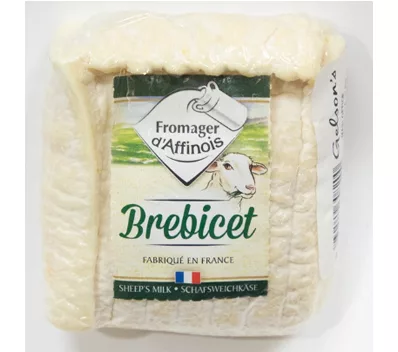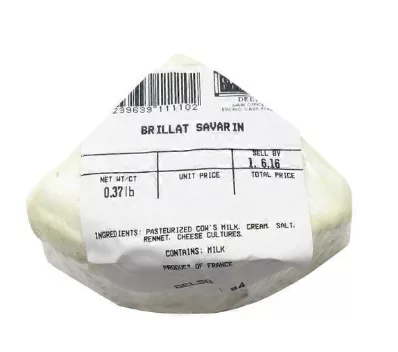
ALL ABOUT BRIE
BRIE
Due to its high regard worldwide, Brie, also called "The Queen of Cheese," is an off-white soft, creamy farmhouse cheese with a rich, buttery, fruity, and earthy flavor that increases with age. This cheese is high in fat, rich in calcium, and has high sodium content compared to other cheeses. Brie's interior is creamy smooth, and bloomy, and the exterior, an edible rind of white mold, is considered a delicacy to brie-lovers.

How Brie is Made
The cheese-making process starts with fresh cow's milk (or goat's milk), then pasteurized - a heat method that sterilizes the milk to make the product safe for consumption and improve its lasting quality. Brie can also be made from unpasteurized milk in Europe. Following the pasteurization process, the curd is created by adding enzymes and rennet to the milk. This creates the creamy texture favored by many cheesemongers. The soft curds are then poured into the appropriately shaped molds and drained for about 18 hours. The brie is sprayed with bacteria flora that creates the white bloomy rind.
Now it's time for the cheese to rest and ripen. Allowing the cheese to mature is essential for the brie to develop its texture and creamy flavor. It takes seven days for brie to grow a fluffy white jacket of mold. The cheese takes one to three months to mature, depending on the size. When adequately aged, the center of the cheese is soft and oozes as if warmed.
Since it is made with raw milk, authentic French Brie cannot be imported into the United States as it needs to be aged for at least 60 days to meet the requirements for U.S. importation. Regrettably, that time would render the brie overripe for eating. However, France exports a stabilized version of brie available in the U.S., meaning the rate and level of acid development are controlled during the draining process, which leads to a young brie with a softer and more elastic texture that retains its physical integrity throughout the ripening process. Stabilized French Brie can be cut before the cheese matures and still have a longer shelf life.
History and Origin
Brie is named after the French region Brie, where it was initially created. The Brie region is located east of Paris, namely Seine et Marne. Brie was first developed in the Middle Ages by the Priory of Rueil en Brie monks. The cheese soon became one of the tributes paid to French kings.
According to Mashed.com, in the eighth century, French Emperor Charlemagne (aka Charles the Great) got a taste of brie at a monastery in Reuil-en-Brie. It became one of his favorite delicacies, thus becoming a sensation. Allegedly, King Henry IV was introduced to Brie by Queen Margot, who favored the creamy delight more than she. He liked eating brie with her rather than going on rendezvouses with his mistress, Gabrielle d' Estrées. According to Pong Cheese, the Queen regularly requested that the cheese be served to satisfy her husband.
In the 19th century, its popularity soared following a cheese contest among many nations.


Uses
Brie is an excellent addition to any cheeseboard and is best served at room temperature accompanied by fruit, nuts, baguette slices, and crackers. Melt slices or chunks of brie in gratins, casseroles, sauces, grilled cheese sandwiches, panini, or on pizzas and flatbreads. Brie also bakes well, either alone or wrapped in pastry.
Now, can the rind be eaten? Yes! Over time, brie develops a soft white outer coating, a natural mold growth—a form of penicillin (usually Penicillium Candidum). It is edible and considered a delicious delicacy. Many people don't know that the rind helps give the cheese its gooey goodness because it breaks down the fats and proteins in the cheese, making it softer over time.
Recipes
Brie, Apple and Walnut Crostini Gelson's (gelsons.com)
Baked Brie and Apple-Cranberry Chutney Gelson's (gelsons.com)
Marmalade Ham, Cheese, and Arugula Sandwich Recipe | Epicurious
Eggs Benedict with Asparagus and Brie Recipe | Epicurious
Sources:
- Milligan, Ceara. (2021) “What You Didn’t Know About Brie.” Accessed May 19, 2022.
- Trowbridge Filippone, Peggy. (2021). “Brie Cheese: Production, Uses, and Recipes.” Accessed May 19, 2022.
- Epicurious. (2021). "Our 15 Best Brie Recipes.” Accessed May 19, 2022.


